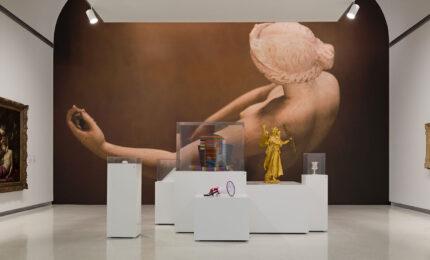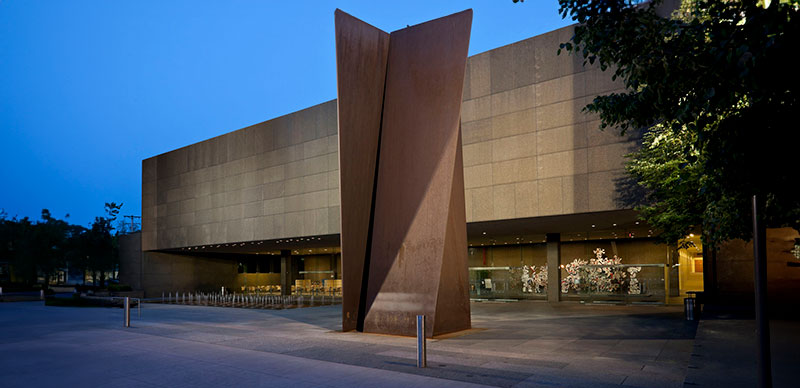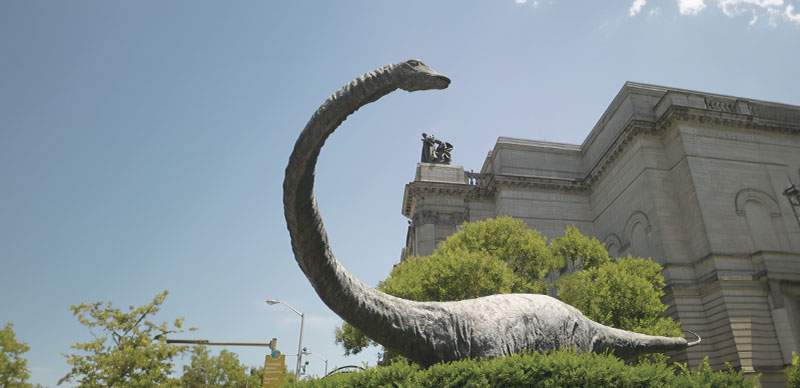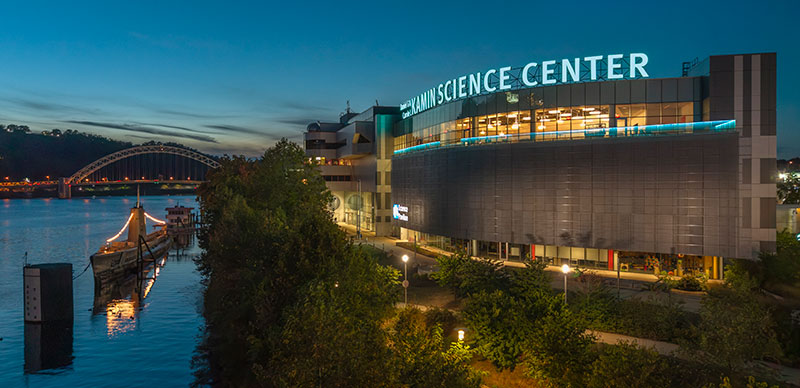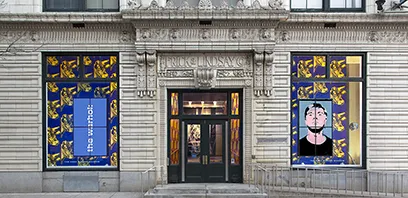As a kid living in Johnstown, Pennsylvania, Stephanie Martin recalls a carefree childhood spent savoring the warm embrace of nature. Thanks to the rivers that quietly flowed nearby and the mountains that seemed to watch over her, Martin felt safe.
It was a false sense of security.
“I grew up thinking all the rivers ran orange—bright orange,” she says. “I didn’t know it was the sulfur from the coal mines.” Pitted, scarred, and increasingly barren of trees, the hillsides, too, have suffered their share of distress from decades of mining.
Now 30 years old, Martin has put down roots in the Pittsburgh area. As an art teacher at Mercer Middle/High School, she talks with her students about pollution and climate change and admits many seem overwhelmed—scared—by an uncertain future. Martin’s response: “If Greta [Thunberg, the 17-year-old environmental activist from Sweden] can do it—we all can.”
But as a sculptor, Martin likes to let her projects do the talking. That’s exactly what Hannah Turpin, curatorial assistant for modern and contemporary art and photography at Carnegie Museum of Art, was looking for when she invited Martin—along with nine other western Pennsylvania-based artists—to share their perceptions, ideas, and fears about the ways we’re changing our planet.
“We are going over the balance and the earth is talking back. The earth is crying out.” – Artist Stephanie Martin
“This is one of the most critical moments and issues of our time,” Turpin says. “We’re interested in exploring how a museum can be responsive to these topics, engage artists as a voice of change, and invite the community to think through some of the challenges.”
The result is Counterpressures, the museum’s 83rd installment of its Forum series. Running through July 12 and developed in partnership with the Associated Artists of Pittsburgh, Counterpressures features new and existing artworks by regional artists, all but one making their Museum of Art debut. Together the work forges an intimate connection between the global picture and what we can see happening in our own backyards.
“The artists are calling out their personal truths,” Turpin says. “Through the power of creativity and reinterpretation, through different forms and colors and the weaving of different narratives, they can bring something to light for us, something we aren’t already seeing.”
Allison Blair’s cyanotypes, for example, urge viewers to honor the plants and animals that have died because of human intervention. Ginger Brooks Takahashi’s sound installation intermingles alarming statistics and personal experiences with air pollution in Pittsburgh; Takahashi spent time working on an urban farm in Braddock, across the street from U.S. Steel’s Edgar Thomson Plant. Tara Fay’s video work explores the challenges of sustainability within black neighborhoods saddled by the barriers of discrimination and limited access to resources, and how a grassroots community-led effort is a way forward.
“The voices, the artwork, the perspectives coming forward in this exhibition are looking at what is happening through the smaller, day-to-day experiences we can all relate to,” Turpin says.
Martin’s experiences are reflected in her sculptures, aptly titled A World Where the Rivers Ran Orange (Belt I, Belt II and Belt III). “I wanted to evoke the feeling that these sculptures are living things. They are the mountains,” she says. The clay Martin molded is imprinted with natural materials—sticks, leaves, seashells—and the colors she used—reds, greens, yellows, oranges—depict the hillsides she remembers.
The works show the cumulative impact of human activity on the natural world. The push, the pull, the counterpressures. “We are going over the balance,” Martin asserts, “and the earth is talking back. The earth is crying out.”
The dangers of such an imbalance were something pioneering environmentalist and Pittsburgh native Rachel Carson wrote about nearly 60 years ago. Silent Spring, first published in 1962, was the quintessential canary in the coal mine if there ever was one.
The museum took a page—actually a passage—from that cautionary tale and built the entire exhibition on its power to both inspire and shock.
“Through all these new, imaginative, and creative approaches to the problem of sharing our earth with other creatures there runs a constant theme,” Carson wrote, “the awareness that we are dealing with life with living populations and all their pressures and counterpressures, their surges and recessions.”
In 2020, Carson’s words describing a place where everything from fish to birds to children have all been silenced by humankind’s inability to appreciate the web of life have taken on an inescapable sense of urgency.
“Art is seen by individuals,” Turpin says, “and the hope is that each person who sees Counterpressures will take something away that results in change.”
Major funding for the Forum series is generously provided by the Juliet Lea Hillman Simonds Foundation. Additional support for this exhibition is provided by The Fellows of Carnegie Museum of Art, the Virginia Kaufman Fund, and the Ruth Levine Memorial Fund.


